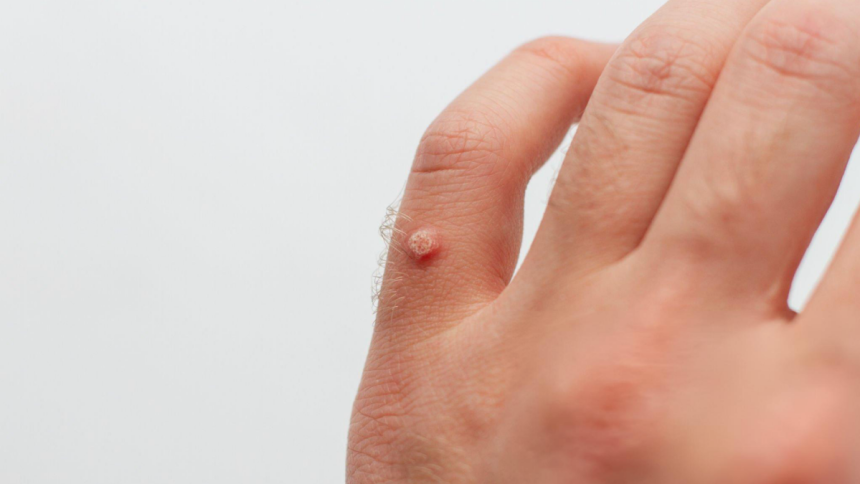Discovering a wart can often be a bewildering experience, one that starts with a simple brush of the skin and spirals into a flurry of questions. What is this small, rough-textured blemish? Is it harmful? These questions are common, and thankfully, the answers are quite accessible. Warts are non-cancerous skin growths caused by viruses in the human papillomavirus (HPV) family. They can appear anywhere on the body but are most commonly found on hands, feet, and limbs. While typically harmless, warts can be unsightly and sometimes painful.
Embark on this narrative journey to not only understand warts but also learn how to effectively remove them from the comfort of your home. We’ll explore traditional and innovative methods, ensuring you can choose the best approach for your skin type and wart characteristics. Join us as we demystify each step, turning the daunting task of wart removal into a manageable and even empowering activity.
Definition and Common Types of Warts
Warts, in their simplest definition, are small, self-contained growths on the skin that are caused by different strains of the human papillomavirus (HPV). This interaction between the virus and the outer layer of skin promotes the rapid growth of cells, leading to the rough texture that warts are known for. While they vary in appearance, most warts are harmless and can be treated at home.
Let’s explore some of the common types of warts to better understand their characteristics:
- Common Warts (Verruca Vulgaris): These are the warts most frequently seen on fingers, backs of hands, and toes. They’re characterized by their rough, grainy appearance and a rounded top. Common warts are often grayish-brown in color.
- Plantar Warts: Found on the soles of the feet, plantar warts can be painful due to their location. Unlike other warts, they often grow inward under a hard, thick layer of skin (callus). Walking can become uncomfortable if they are not treated.
- Flat Warts: Smaller and smoother than other types, flat warts tend to grow in large numbers and can appear anywhere on the body. Children typically get them on the face, men on the beard area, and women on the legs.
- Filiform Warts: These have a more unusual appearance, looking like tiny threads or tags that stick out from the skin. They are most commonly found around the mouth, nose, or beard area.
- Periungual Warts: Found under or around the toenails and fingernails, these warts can affect nail growth. They are often more difficult to remove because of their location.
Professional Wart Removal Techniques
When home remedies and over-the-counter solutions don’t clear those stubborn warts, professional medical treatment may be the next step. Dermatologists and healthcare providers offer several effective techniques to safely wart remover, depending on their type, location, and severity. Here’s a look at the most commonly used professional methods for wart removal:
- Cryotherapy: This is one of the most frequently recommended treatments for warts. The procedure involves freezing the wart with liquid nitrogen. The extreme cold causes the wart to blister and eventually fall off. Cryotherapy can be slightly painful and may require multiple sessions to completely eradicate the wart, especially if it’s large or deeply rooted.
- Laser Treatment: Utilizing a concentrated beam of light, laser treatment burns and destroys the wart tissue. This method is particularly useful for warts that are hard to reach or those that have not responded to other treatments. Laser treatment can be expensive and, like cryotherapy, may require several visits to achieve clear skin.
- Electrosurgery and Curettage: Electrosurgery involves burning the wart with an electrical charge, followed by scraping off the wart tissue with a curette—a small, spoon-shaped instrument. This method is often used for larger and tougher warts, though it might be too aggressive for warts located in sensitive areas.
- Chemical Peels: Professionals might apply strong peeling medicine, like salicylic acid or trichloroacetic acid, at higher concentrations than those available over-the-counter. These chemicals cause the wart to gradually peel away. This treatment requires strict adherence to application guidelines to protect the surrounding skin and might need several applications over weeks or months.
- Immune Therapy: This approach aims to harness the body’s natural immune system to fight off the virus causing the wart. The doctor might inject an antigen or apply a topical solution that provokes an immune response targeted at the wart cells. Immune therapy can be an option for those with recurrent warts that do not respond well to other treatments.
Home Remedies for Wart Removal
While professional treatments are highly effective, many people opt for home remedies either as a first line of treatment or as a complementary approach. These methods can be simple, cost-effective, and easy to implement using common household items. Here are several popular home remedies for wart removal:
- Apple Cider Vinegar: This remedy is used for a variety of skin issues, including warts. The acidity of apple cider vinegar is believed to help break down the skin growth. Apply a small amount of vinegar on a cotton ball, place it on the wart, and secure it with a bandage overnight. Repeat this process nightly until the wart begins to diminish.
- Garlic: Known for its antiviral properties, garlic can be an effective natural remedy for warts. Crush a garlic clove and apply it directly to the wart, then cover it with a bandage. Do this nightly until the wart gradually disappears.
- Tea Tree Oil: This essential oil has strong antiviral and antiseptic properties, making it a popular choice for treating warts. Apply a small amount of tea tree oil directly to the wart using a cotton swab, twice daily. Be mindful as tea tree oil can be irritating to the skin, so it’s wise to test it on a small area first.
- Banana Peel: The inside of a banana peel can be used to treat warts due to its natural oils and chemicals which are thought to help dissolve them. Rub the inside of the peel on the wart every night before sleeping, and then tape it over the area. Continue this until the wart fades away.
- Aloe Vera: Aloe vera is soothing and can help treat warts due to its anti-inflammatory properties. Extract the gel from an aloe vera leaf and apply it directly to the wart. Cover it with a bandage and reapply daily. Aloe vera can also help reduce irritation caused by other treatments.
- Duct Tape: This method, known as duct tape occlusion therapy, involves covering the wart with a small piece of duct tape. Replace the tape every few days, cleaning the area each time. This method can take several weeks but is often effective at gradually removing the wart.
Identifying Warts on Skin
Correctly identifying warts on your skin is the first step toward effective treatment. Warts can sometimes be confused with other skin conditions, such as corns or calluses, so knowing what to look for can help in determining the right approach to removal. Here’s how you can identify warts:
- Texture and Appearance: Warts generally have a rough texture and are raised above the skin surface. Common warts have a cauliflower-like appearance and are usually skin-colored, though they can also be darker.
- Shape and Size: Warts vary in size from a pinhead to a large pea. While some warts remain small, others can grow or spread into clusters known as mosaic warts.
- Common Locations: Depending on the type, warts can appear on different parts of the body. Common warts typically show up on the hands, especially around the nails and on fingers. Plantar warts appear on the soles of the feet and can be identified by their location and because they grow inward, causing a thick patch of skin.
- Sensation: Warts may cause discomfort, especially plantar warts located on weight-bearing areas of the foot. Others might not cause any pain unless bumped or scraped.
- Disruption of Skin Lines: Normal skin has lines and ridges, which warts typically interrupt. If you notice that the normal skin lines go around a growth, it’s likely a wart.
- Black Dots: Some warts, particularly common warts, display tiny black dots within. These are often called “wart seeds” but are actually small, clotted blood vessels.
Conclusion
Warts, though generally harmless, can be a source of discomfort and self-consciousness. Identifying and understanding the type of wart you have is crucial in selecting the most effective treatment method. Whether you choose to explore home remedies for a natural approach or seek professional medical techniques for faster results, remember that patience and consistency are key to successfully removing warts.
If home treatments do not provide the desired results, or if you experience pain or significant discomfort from your warts, consulting with a healthcare provider is advised. They can offer guidance based on the latest medical treatments and ensure that your skin is treated safely and effectively.
Lynn Martelli is an editor at Readability. She received her MFA in Creative Writing from Antioch University and has worked as an editor for over 10 years. Lynn has edited a wide variety of books, including fiction, non-fiction, memoirs, and more. In her free time, Lynn enjoys reading, writing, and spending time with her family and friends.















